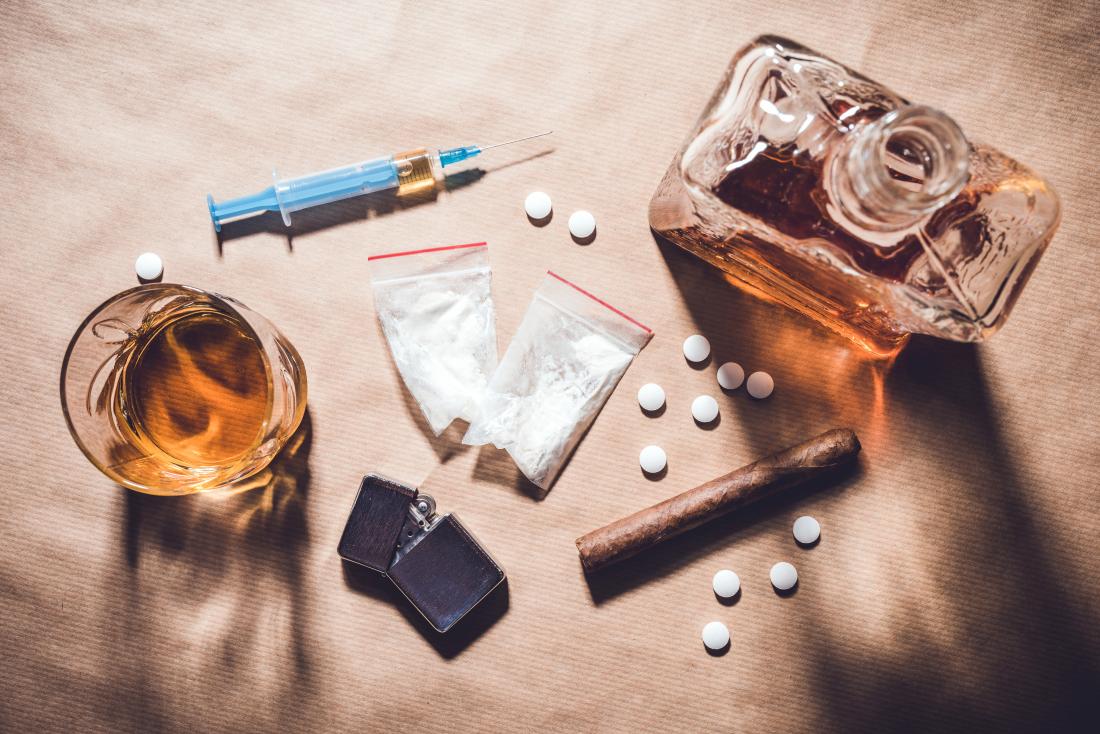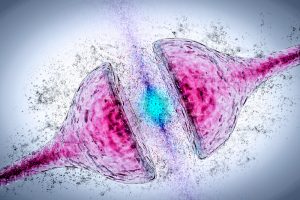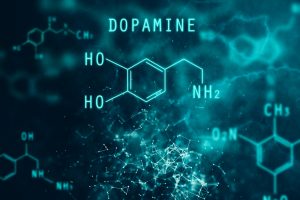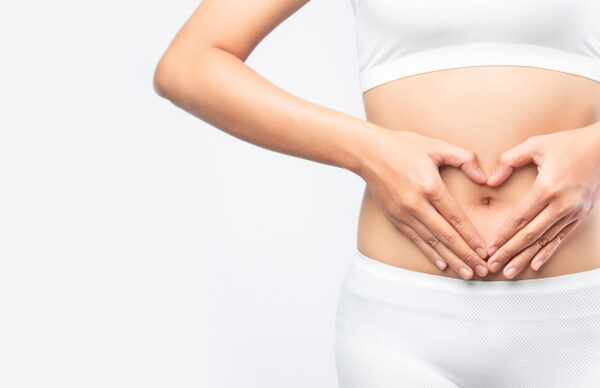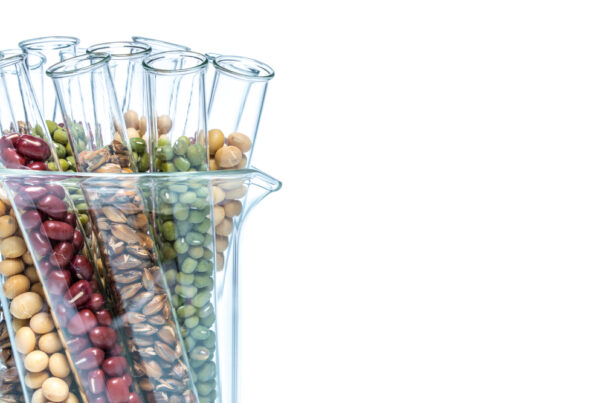What is Addiction?
According to Wikipedia, addiction is compulsive engagement in a behaviour that is naturally rewarding, despite adverse or negative consequences.
But after research done in neurogenetics and neurogenomics by Dr. Kenneth Blum, PhD, The American Society of Addiction Medicine in August 15, 2011 changed the definition highlighting that addiction is a chronic brain disorder and not simply a behavioural problem of too much indulgence.
Dr. Jess Armine is someone I greatly respect when it comes to neuro-biochemistry, and he would be the first one to say that addictions is a physiological problem and not a psychological problem.
What does that mean?
It means that our nervous system runs the show and maintains balance by striving for homeostasis. Any problems in our support systems such as the immune and endocrine systems can affect and disrupt the nervous system.
All these systems work together and cannot be dysfunctional in isolation without affecting the others. Clinical problems occur when things go wrong within these systems at a molecular level.
Addictions is one clinical problem that has its root in dysregulated biochemistry, and not in the mind as a battle in willpower.
So, let’s dissect this a little further…
NEUROTRANSMITTERS
There are a number of neurotransmitters involved in addiction and impulsive behaviours such as:
- Dopamine
- Serotonin
- Opioid peptides
- GABA
- Norepinephrine
Note that dopamine and norepinephrine are both catecholamines which depend on SAMe (S-Adenosyl Methionine) and proper methylation to be metabolized further. Keep in mind that estrogen uses similar catabolic pathways, which is why a lot of these behaviours may get worse when puberty hits due to the sudden surge in hormones that then puts pressure on this system.
Our focus for this article will be on dopamine.
THE ROLE OF DOPAMINE
Dopamine is the neurotransmitter that gives us the feeling of pleasure. It is more closely related to ‘happiness’ than serotonin, even though serotonin seems to have claimed that label.
However, there is still a very close relationship between dopamine and serotonin. When one goes up, the other one goes down. The exception here may be in the late stages of chronic disease where most neurotransmitters become depressed due to decompensation and are found to be low on testing.
Dopamine also helps to keep us motivated, energized and focused. That feeling of jumping out of bed ready for a productive day ahead.
Which is why it’s one of the key neurotransmitters considered to be dysregulated in conditions such as ADHD, because the energy is not focussed anymore, but rather more scattered.
So that brings us to the symptoms of too much or too little dopamine…
Insert table comparing too much/little dopamine
THE HOME OF DOPAMINE
The dopaminergic reward pathway is found in the meso-limbic area of the brain. This pathway connects the ventral tegmental area in the midbrain, to the nucleus accumbens and olfactory tubercle in the ventral striatum.
ACTIVITIES THAT STIMULATE DOPAMINE
Think of everything that you derive pleasure from, or that makes you feel good:
- Shopping
- Eating
- Drinking
- Gambling
- Drugs
- Extreme sports
- Exercise
- Sex
But for each person it may be slightly different. Gold, Hoebel and Avena have shown through their research that food and drugs have similar neurochemical mechanisms which prompted them to hypothesize that food can be just as addictive as opiates.
These are often impulsive behaviours as dopamine is needed to regulate impulsiveness. But the biochemical pathways of impulsiveness is very similar to that of pathological aggressive behaviour.
DOPAMINE RESISTANCE
Just like you can be insulin resistant, you can also be dopamine resistant. When the dopamine receptors do not respond appropriately to the available dopamine, you become deprived of the ‘dopamine high’ which makes you crave more.
So your behaviour changes and you start to exaggerate the activities that would normally provide you with a dopamine release, in a somewhat desperate attempt to feel good.
Your cells then gear up to synthesize and release more dopamine.
This is called ‘Reward Deficiency Syndrome’ (RDS), and what drives addictions.
DOPAMINE IN THE GUT
Eating triggers the release of ghrelin, one of the gut incretin hormones, that then feedbacks to the brain and stimulates the release of dopamine. This is what makes us derive pleasure from eating, enjoy food, and helps us to feel satisfied.
Why do many obese people fail when it comes to diets? The answer may be found in the dopamine receptors as we’ll see a bit later.
DOPAMINE AND INSULIN
The food that makes us feel good is usually not of the healthy variety either, so when those with low dopamine response (note that I didn’t say levels) go for food as their addiction, it’s usually of the high carbohydrate, sugar and fat variety.
This invariably triggers an insulin response which over long periods of time contributes to blood sugar dysregulation, insulin resistance and weight gain.
Now we are dealing with too much dopamine and insulin but a lack of response to these two signalling molecules.
This is…
Dopamine resistance AND Insulin resistance.
DOPAMINE EFFECT ON THYROID
When dopamine is produced in excess as in the case of addictions, or when dopaminergic drugs such as Ritalin are taken with ADHD, it may affect the thyroid through the stimulation of TSH (Thyroid Stimulating Hormone) release.
Higher dopamine levels will also likely result in higher cortisol production due to its effect on the adrenal glands and this may cause an increased conversion of T3 (active thyroid hormone) to reverse T3 (inactive thyroid hormone), which will lead to a higher tissue resistance to T3.
Because high dopamine can often be associated with overexcitation and brain inflammation, you would expect to possibly see elevated pro-inflammatory cytokines. These cytokines can cause a decrease in 5’-deiodinase activity and promote a hypothalamus paraventricular effect which can lead to both low levels of T3 and TSH.
DOPAMINE AND TESTOSTERONE
The neurotransmitters and hormones also have relationships with each other. Dopamine in this instance controls prolactin synthesis and release, and prolactin suppresses testosterone secretion.
So, when dopamine goes up, prolactin goes down, and testosterone goes up.
Or…
High Dopamine = High Testosterone
DOPAMINE AND THE IMMUNE SYSTEM
So, if dopamine is associated with inflammation and increased cytokines and chemokines, what can raise these inflammatory markers which may have an effect on dopamine and thus addictions?
- Social disruption
- Stress
- Lack of sleep or disturbed circadian rhythms
- Infections
- Gut dysbiosis
- Environmental toxins and metals
- Poor diet with lack of anti-inflammatory foods (vegetables, omega 3’s)
- Overuse of medications (antibiotics and gut dysbiosis)
And the gut dysbiosis and poor diet often follows the food addictions, so it becomes a never-ending cycle that feeds into itself.
WHAT ABOUT THE GENES?
Absolutely there are genes involved. And one very important one is the DRD2 A1 gene located on chromosome #11.
- The A1 gene is associated with a reduction in dopamine receptors.
- The A2 gene is normal expression of dopamine receptors.
Having the DRD2 A1 allele increases the risk for RDS by 74.4%. Having the gene doesn’t necessarily mean you will develop RDS though, as epigenetics has a 30-50% chance to prevent expression of this gene variation, and this was found through some of the work of Eric J. Nestler.
DRD2 A1 alleles seem to be associated with extroversion and neuroticism, similar characteristics found in Schizophrenics.
Typical symptoms of schizoid individuals are of them being:
- Passionless
- Depersonalized
- Conflicted
- Hypersensitive
- Phobic
- Self-deserting
The difference is that those with DRD2 A1 alleles seem to seek out pleasure to alleviate their symptoms. This can be obtained by many different means such as violent or antisocial acts, or through addictions.
DAT1 or the dopamine transporter gene also seems to play a role. Dopamine transporter receptor sites are significantly increased in violent alcoholics compared to non-violent alcoholics. So, DAT1 polymorphisms seems to help determine whether the behaviour is more violent or not.
Upregulated COMT activity will also break dopamine down faster than normal, leaving the person at a deficit with less dopamine to bind to receptors.
Dr. Kenneth Blum is working with other groups to develop the first ever Genetic Addiction Risk Score (GARS) which includes a 10-gene polymorphic panel of reward genes that was found to significantly predict alcohol and drug severity.
You can also listen to the podcast below that I did with FX Medicine regarding the associations between our genes and our addictive behaviours.
BRAIN ENDORPHINS
D-phenylalanine raises brain endorphins which help to curb cravings, whereas stress does the opposite and lowers endorphins.
THE “ATTRACTION” OF ADDICTION
There was a really interesting study done by Dr. Kenneth Blum’s group at Wake Forest that found within their study that married couples both had the A1 allele mutation in families with very serious RDS.
This indicates that men and women with the mutation seem to be attracted to each other.
CONVENTIONAL TREATMENT
Certain medications can mimic the effects of addictive drugs, which relieves withdrawal symptoms and cravings and make it easier for people to stick with treatment programs. During the initial stages of recovery, the body must rid itself of drugs and go through a detox period.
Different drugs can be used here, such as:
ALCOHOL
BENZODIAZEPINES – a sedative that reduces anxiety and irritability and often used with alcohol, cocaine and opiates. Problem is they are also addictive, so you are just changing one addiction for another.
ANTIDEPRESSANTS – to relieve symptoms of depression. Problem is that anti-depressants such as Zoloft and Prozac do not replenish serotonin stores but simply recycle the little bit that is there, which is why you struggle to get off them.
CLONIDINE – reduces sweating, cramps, muscle aches and anxiety. Often used to treat alcohol and opiate withdrawals.
NALTREXONE (VIVITROL) – blocks receptors in the brain that produces alcohol’s pleasurable effects or endorphins. This subdues the urge to drink.
ACAMPROSATE (CAMPRAL) – relieves emotional and physical distress caused by alcohol addiction. This is used after complete detox to prevent feelings like anxiety and depression which may trigger urges to start drinking again.
DISULFIRAM (ANTABUSE) – causes side-effects of nausea and vomiting when someone drinks whilst on the drug. This acts as a deterent.
HEROIN AND PAIN KILLERS
METHADONE – an opiate that binds to the same receptors in the brain as heroin and painkillers without getting the user high. This suppresses cravings and withdrawal symptoms. Problem is it can also be addictive.
BUPRENORPHINE (SUBOXONE) – works similar to methadone, but less potential for addiction.
NALTREXONE – works similar for opiates as for alcohol because they activate some of the same receptors in the brain.
SO, WHY HIGH RELAPSE RATES? WHY IS THIS NOT WORKING?
The problem with conventional treatment is that it treats the symptoms. But patients often have multiple symptoms that can be very diverse, and so, despite medications and supplements they get very little overall improvement in their condition.
There’s also very high rates of relapse and often new symptoms develop as a side-effect of medication or a shift in biochemistry in a different direction, not necessarily the right one.
The vast majority of conventional treatment options available to addicts are geared towards the psychological/spiritual side whereas the biochemical side has been ignored to some extend.
Although this is hopefully starting to change with more research into genetic expression with regards to the neurological system and addiction.
WE HAVE TO ASK OURSELVES…
What is the solution?
Is it to stimulate dopamine or take dopamine supplements/drugs?
Or is it to improve receptor function?
What do you think?
If we look at the factors that are most often contributing to relapse, we can see they are:
- Stress
- Depression
- Anger
- Anxiety
- Craving
We can work on cravings by using D2 agonists and activating the dopaminergic reward pathway.
We can work on anger, anxiety and depression by correcting neurotransmitter imbalances and other things.
We can reduce stress and improve our tolerance to it.
So this means there’s a lot of things we can do outside of conventional treatment that may be more effective.
KB220
KB220, also known as SynaptaGenX or Synaptamine, is a patented natural dopamine agonist that has been proven safe and effective at reducing craving behaviours. It is a natural nutraceutical that works by potentially inducing dopamine release, causing the same induction of D2-directed mRNA and thus allows dopamine receptors to proliferate.
KB220 is composed of precursor amino acids which are the building blocks of neurotransmitters and other ingredients that support neurotransmission, such as:
Thiamine, vitamin B6, chromium polynicotinate with synaptose.
Synaptose contains:
DL-phenylalanine, L-tyorsine, passion flower, L-glutamine, 5-HTP, thiamine hydrochloride, pyridoxine HCl, arabinogalactans, N-acetylglucosamine, astragalus, aloe vera, frankincense resin, white pine bark extract, N-acetyl-cysteine, rhodiola
Brain imaging studies showed that those who took KB220 had increased alpha and low beta bands and normalized brain function in protracted abstinent psycho stimulant addicts. It also restored resting-state functional connectivity across a network that included the posterior cingulate, occipital cortical areas, cerebellum dorsal anterior cingulate, medial frontal gyrus, and nucleus accumbens.
This normal resting state functional connectivity is very important to allow ‘cross-talk’ between different parts of the brain. You want the brain to be ‘connected’, esp. between ‘decision making’ and ‘craving’.
When they did trials at the Recovery Program for Both Federal and Municipal Court System in the Bio-Clarity Rehabilitation Clinic in Las Vegas, they found that alcoholism relapse was only 7% after being on the KB220.
And these figures can be translated to many other addictions as well such as food addiction.
HOW DOES KB220 WORK?
It boosts serotonin in the hypothalamus with chromium acting on insulin-receptors to increase receptor sensitivity. This increases tryptophan delivery to the brain by up to 33% by altering the carbohydrate ratio in the periphery to favour tryptophan in the liver.
L-Phenylalanine increases dopamine at the VTA (Ventral-Tegmental Area) by about 20%.
L-glutamine is converted to GABA at the substantia nigra.
D-Phenylalanine is an enkephalinase inhibitor that prevents methionine enkephalin and other endorphins from being broken down, and so enhances the activity of natural peptidyl opiates in the hypothalamus.
N-acetyl-cysteine helps to drive the glutaminergic system at the VTA to release dopamine at the NAc (Nucleus Accumbens) which is the reward site of the brain.
Rhodiola inhibits COMT (Catecholamine-Methyl-Transferase) activity which enhances the release of dopamine in the synapse to combine with the post dopamine D2 receptor. It also inhibits MAO-A activity which allows more residual dopamine to be transferred to the vesicles of presynaptic neurons for higher dopamine release.
The other immune boosters have anti-cytokine properties which could offset hormones responsible for stress induction and ‘anti-reward’ properties.
References:
- Chen et al . Narcotic antagonists in drug dependence: pilot study showing enhancement of compliance with SYN-10, amino-acid precursors and enkephalinase inhibition therapy. Med Hypotheses. 2004;63(3):538-48.
- Are dopaminergic genes involved in a predisposition to pathological aggression? Hypothesizing the importance of ‘‘super normal controls’’ in psychiatricgenetic research of complex behavioral disorders
Thomas J.H. Chen a,b, Kenneth Blum c,d,e,*, Daniel Mathews, Larry Fisher, Nancy Schnautz, Eric R. Braverman h, John Schoolfield, Bernard W. Downs, David E. Comings k
https://drive.google.com/file/d/0B_VC4f5XwFe3VjVkNjRNZnNCWjg/view
- Antropol. (2009) 3
- https://www.ncbi.nlm.nih.gov/pmc/articles/PMC5551501/
- Nutrigenomic targeting of carbohydrate craving behavior: Can we manage obesity and aberrant craving behaviors with neurochemical pathway manipulation by Immunological Compatible Substances (nutrients) using a Genetic Positioning System (GPS) Map?
- William Downs a, Amanda L.C. Chen b,*, Thomas J.H. Chen c,*, Roger L. Waite a, Eric R. Braverman d,e,Mallory Kerner e, Dasha Braverman e, Patrick Rhoades f, Thomas J. Prihoda g, Tomas Palomo h, Marlene Oscar-Berman i, Jeffrey Reinking j, Seth H. Blum k, Nicholas A. DiNubile l, H.H. Liu m,Kenneth Blum n,*

